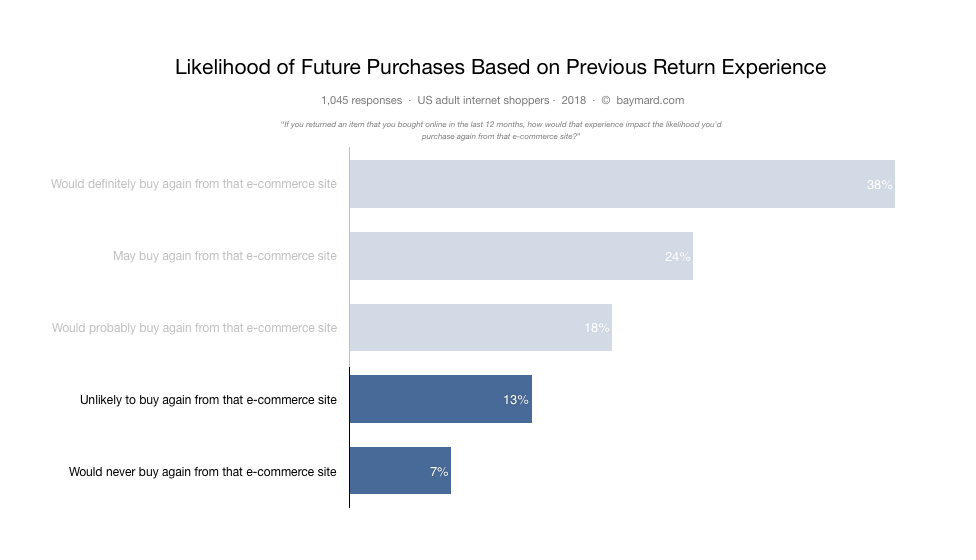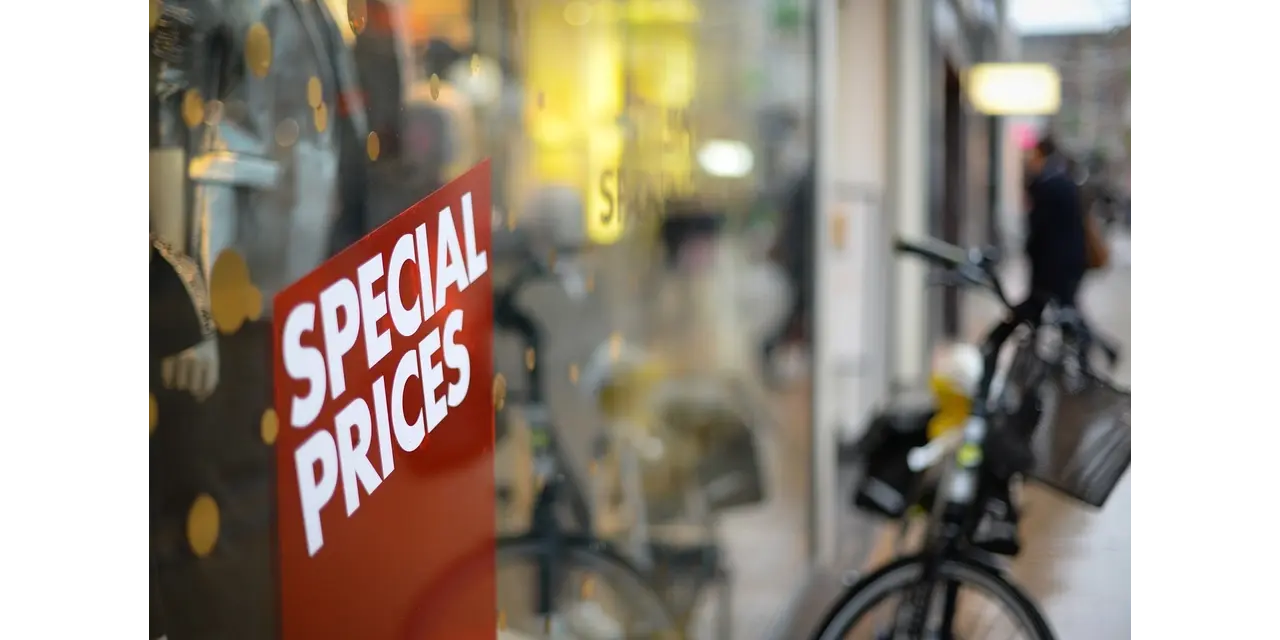In order to answer your request, we are obligated to process the data given above. Sometimes, however, we would like to use them for slightly different purposes, such as statistical data or informing you about our new products and services.We promise that we will use the given information for communication purposes only. We also remind you that you can unsubscribe from our mailing at any time (see Privacy Policy).
When running an e-commerce business you will not avoid product returns. However, you need to realize that reserved logistics is not only a sad necessity but also.... part of creating the ideal customer experience.
So instead of metaphorically insulting your customers for not being satisfied with the item they ordered, make it easy for them to return the product smoothly - and send them a return label right away, along with their purchase, for further potential use. It is a really important element that has a huge impact on customer satisfaction and retention.
Online Shopping and customers' expectations
The returns process is a touchy subject in the e-commerce industry, giving many retailers a real headache. And it's not only sellers who are affected - but returns also influence the work of all kinds of logistics solution providers.
The eCommerce returns process from the customer's point of view is a piece of cake - especially in this day and age of client-centricity theory and continuous customer satisfaction level development. Companies realize that a positive returns experience encourages online shoppers to return to chosen e-com in the future, builds customer loyalty, and at the end of the day, in the long run, is a profit, not a loss. Nowadays customers buy online more and more - so the game is definitely worth the money.
That is exactly why it is so important to meet the expectations of your customers - and to create an ace in your sales sleeve, i.e. a clear and transparent return policy, enriched with free returns, which will surely win the hearts of buyers.
Data shows that in 2020, consumers returned products worth as much as... $428 billion, or about 10% of total retail sales. Thus this return number significant bump, it would seem that reverse logistics is the new black in the fulfillment industry.
What's more, the recent research clearly shows that the problem of returns is mostly related to online trade - as much as 20% compared to 9% in buying in brick and mortar stores. Returns are especially common in the fashion industry, with shoppers returning items for the following reasons (data from the same source as in the previous sentence):
- Size too small: 30%
- Size too large: 22%
- Changed my mind: 12%
- Style: 8%
- Not as described: 5%
- Defective: 5%
- Other or not specified: 18%
In conclusion to those survey findings, more than half of the returns are due to buying the wrong item in incorrect sizing; therefore, there is a high probability that customers will return the clothing, but... will buy another, better-sized item, and this way customer retention will remain under control.
Do you know how do buyers (and returners) feel about the return process itself?
Research shows that more than half of shoppers (as many as 60%) would not buy from a retailer again if they were required to pay shipping fees related to a returned order.
Respondents were also very negative about the long time taken to receive a refund, the short time given to return the parcel included in the return policy, and the inability to track the returns journey of their parcel, together with the overall lengthy process of returning.
Respondents reconsider shopping when having an experience with positive eCommerce actions in terms of return processes; they rated high free returns (almost 70% of respondents), convenient stationary locations for returns, the ability to use reusable/resealable packaging for returns. Consumers noted that one of the factors encouraging them to buy again in the chosen e-store is no need to print labels themselves (almost three-quarters of respondents admitted that this aspect should remain with the store) and the ability to track the package and related communication.
But do customers actually come back to buy in chosen eCommerce after making a return? I understand that you can take this as a myth or an encouragement to continue working hard on customer satisfaction and retention - however, the returns experience data speaks for itself.

Return Label: generating return labels process
Before we move on to more advanced pieces of advice, let's start with the basics - the definition of a returns label. This is the type of shipping label that allows you to send the package back to the seller or the appropriate warehouse. It contains the typical shipping label data: address, barcode, and additional information allowing for identification and tracking of the package.
There are two approaches to the subject of return shipping labels: the first is that customers should be able to print the return shipping label themselves. They should be able to print this type of own labels from the store's website from their customer account. You can also email them with the document to be printed and used if needed.
The other option, which is much more beneficial from a customer experience point of view, is attaching a ready-made label to the shipped order - so that all the customer has to do is take it out of the packaging and stick it on the return box.
Note: returns labels are not the same as a packing slip, although both documents should be included in the packing box (although this practice is often abandoned in favor of sending this information online for environmental reasons). The packing slip is a document listing all the goods ordered.
Out of the two most common ways to provide a return label, the most convenient option for your eCommerce customers is for you to include a return label in all of your outbound packages - and offer free return shipping.
While sending a return label with an order is certainly more desirable for customers, keep in mind that it also has some negative consequences (some e-commerce professionals point out that it is an incentive for shoppers to return items, thus increasing the number of returns and additional costs for the company).
But why, after weighing the pros and cons, is it worth going the extra mile when it comes to adding return labels to their parcels? Check it out in the list below!
1. If the customer never uses a pre-printed return label, they remain just a nice gesture, contributing to a positive CX
Of course - you will waste some paper, which has a downside from an environmental point of view, and you will generate the additional cost of printing the document. However, you will also gain in the eyes of your customers - which, as you know, is invaluable from the point of view of brand loyalty.
2. Save time and effort for shoppers (and retain customers)
Making the customer's life easier, in the end, is always a good thing; even if the customer decides to return the product this time - he may be so satisfied with your service that next time he will make a bigger order (especially popular in the fashion industry).
3. Money matters - profit margins vs. high costs of the shipping carrier
By giving customers a return label yourself, you choose the shipping option. It's a necessary but unfortunate cost. You can bet on a relatively cheap courier - then you won't have to reimburse customers for the high cost of their chosen carrier and at the same time, you take extra care of consumers' experiences and reduce costs related to reverse logistics.
4. Online store should: a good return guarantee
Imagine a situation in which you have to reimburse a customer for a return package... which will never reach your store because, for example, the customer wrote the wrong address on it. When running an eCommerce business such a situation really may happen: especially in the case of having an automatic return authorization.
Putting returns in the hands of consumers is allowing them to make mistakes. We are all human - but at the end of the day, you pay for their mistakes. By including a return label, you can guarantee that your order will be returned to the right place.
Where should customers send returns?
You can choose a convenient location, and decide to return products to the warehouse - it is currently the most popular eCommerce return method. At the warehouse, the merchandising department carefully checks the returned products and confirms that they are acceptable. Such a dedicated apps are time saving - the applications support the whole process, inform customers about the progress of their returns and automatically update your inventory management system. Return labels are key when it comes to returns to the warehouse.
Another option you can choose is to allow customers to return goods to stationery stores. Research shows that 62% of shoppers are more likely to buy online if they can return it to a physical location. What's more, this option also helps to sell the returned goods faster by putting returned item directly back on the store's shelf. What's more, visiting the store has an influence on impending surge - this way you can reduce the number of returns in the future: perhaps if you sell in the fashion industry, for example, the customer will try on other clothes and find out their correct size?
Summing Up
Online purchases and shopping online are a challenge not only for eCommerce sales but also for shoppers themselves. Customers shop online and search for products online without the possibility to see them with their own eyes, touch them or try them on - no wonder that, especially in the context of online shopping, the returns processes are essential.
So, as online retailers, make sure you guarantee a positive experience related to returns processes. Put a transparent return policy on the clear returns page containing refund information, send pre-printed return labels, and abolish return costs taking shipping fees on your shoulders. Improve customer interactions with a customer service department and make the whole return journey smooth - and watch your eCommerce businesses grow.





